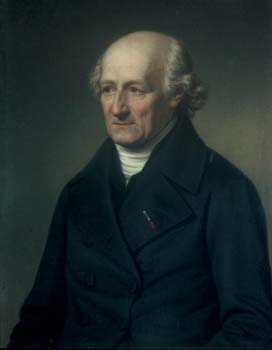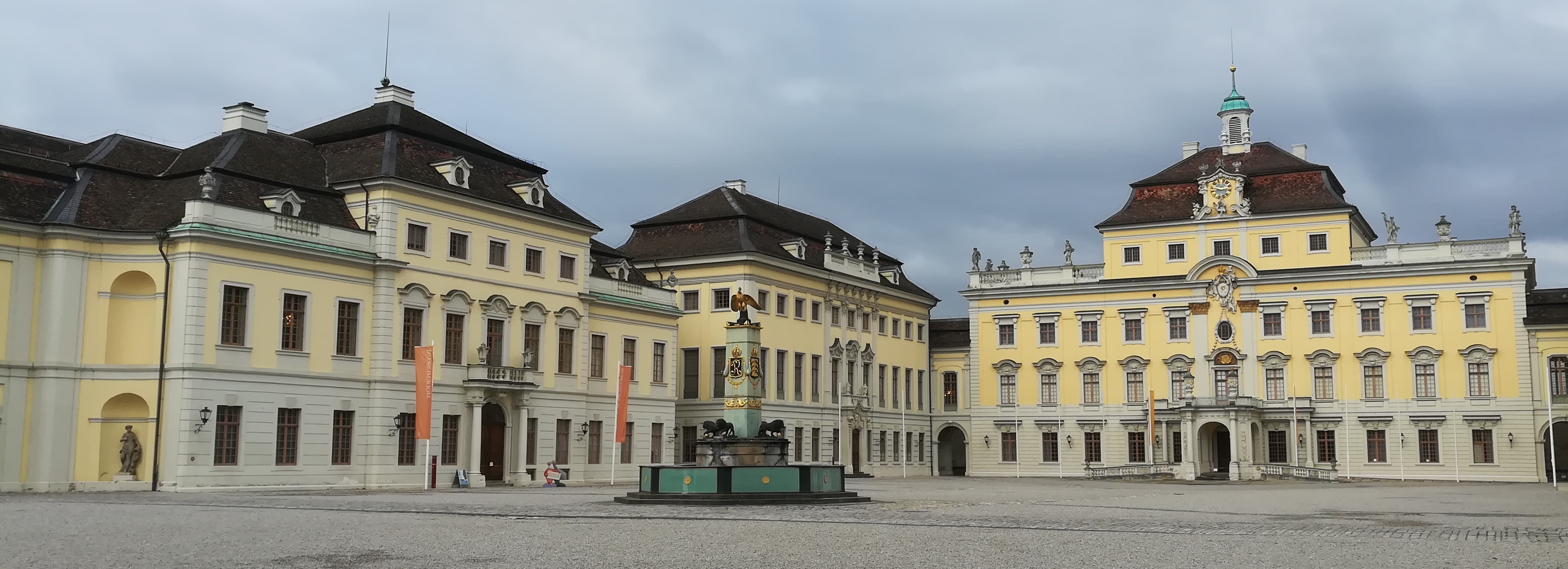|
Oberstenfeld
Oberstenfeld () is a municipality in the district of Ludwigsburg in Baden-Württemberg in Germany. It is located about 40 km north of Stuttgart. Geography Oberstenfeld is located in the upper Bottwar river valley. It lies in the northeast of the district of Ludwigsburg. In the north it borders to the Löwenstein Hills, in the west there are the hills Forstberg and Wunnenstein covered by vineyards. Neighboring towns The closest neighboring towns are Beilstein to the north and Großbottwar to the south. Incorporated villages The villages Gronau (located northeast of Oberstenfeld) and Prevorst (located about five kilometers northeast in the Löwensteiner Berge hills) are incorporated. Prevorst is an exclave located between the Heilbronn district and the Rems-Murr district. With an elevation of 482m it is the highest location of the Ludwigsburg district. Transport Road links The motorway ''Autobahn'' A81 (Zürich – Singen – Würzburg – Hamburg) is nearby and r ... [...More Info...] [...Related Items...] OR: [Wikipedia] [Google] [Baidu] |
Beilstein, Württemberg
Beilstein () is a town in the district of Heilbronn in Baden-Württemberg in southern Germany. It is southeast of Heilbronn. Beilstein is on the Württemberg wine route (''Württemberger Weinstraße''). Geography Beilstein lies in the south of the district of Heilbronn. The town is crossed by the Söhlbach, a tributary of the Bottwar. The communal land of Beilstein includes big parts of the Löwenstein Mountains. Annasee Lake is nearby. Neighbouring municipalities Neighbouring towns and municipalities of Beilstein are (clockwise from the south): Oberstenfeld, Großbottwar (both in the district of Ludwigsburg), Ilsfeld, Abstatt, Lauffen am Neckar (exclave Etzlenswenden), Löwenstein (all in the district of Heilbronn) and Spiegelberg (Rems-Murr-Kreis). The village Farnersberg is an exclave between Untergruppenbach in the north and Lauffen's exclave ''Stadtwald Etzlenswenden'' in the south. Beilstein has combined with Abstatt, Ilsfeld and Untergruppenbach to form a joint ... [...More Info...] [...Related Items...] OR: [Wikipedia] [Google] [Baidu] |
Ludwigsburg (district)
Landkreis Ludwigsburg is a ''Landkreis'' (district) in the middle of Baden-Württemberg, Germany. Neighboring districts are (from north clockwise) Heilbronn, Rems-Murr-Kreis, the district-free city Stuttgart, and the districts Böblingen and Enz-Kreis. History The district dates back to the ''Oberamt Ludwigsburg'', which was created by the dukedom Württemberg in the beginning of the 19th century. After several small changes during the century, it was converted into a district in 1938. Several municipalities of the dissolved ''Oberämter'' Besigheim, Marbach and Waiblingen were added to the newly formed district. As a result of the communal reform of 1973, the district gained about half of the dissolved district Vaihingen, and some few municipalities from the districts Backnang and Leonberg. Geography The main river in the district is the Neckar, which divides the district into a big western part and a smaller eastern part. Partnerships Starting in 1990 the district has a pa ... [...More Info...] [...Related Items...] OR: [Wikipedia] [Google] [Baidu] |
Löwenstein Hills
The Löwenstein Hills (german: Löwensteiner Berge) are a hill range up to , in the counties of Heilbronn, Ludwigsburg, Rems-Murr-Kreis and Hohenlohekreis in the German state of Baden-Württemberg. They are named after the town of Löwenstein. Geography Location According to the classification of the Handbook of Natural Region Divisions of Germany,Emil Meynen and Josef Schmithüsen (1953–1962) ''Handbuch der naturräumlichen Gliederung Deutschlands'' the Löwenstein Hills are natural region number 108.1 in the Swabian-Franconian Forest in the Swabian Keuper-Lias Plains. Most of the range belongs to the Swabian-Franconian Forest Nature Park. The forested hill country lies around 40 kilometres north-northeast of Stuttgart and about 20 kilometres east-southeast of Heilbronn between the Hohenlohe Plain to the north, the Mainhardt Forest to the northeast, the Murrhardt Forest to the southeast, the Backnang Bay to the south and the Neckar Basin to the west. The Heilbr ... [...More Info...] [...Related Items...] OR: [Wikipedia] [Google] [Baidu] |
Großbottwar
Großbottwar (or ''Grossbottwar'') is a town in the Ludwigsburg district of Baden-Württemberg, Germany. It sits within the Neckar River basin and is located on a tourist route through the Württemberg wine region. The Großbottwar region has been inhabited since at least the Stone Age and was occupied by the Romans. The town itself was founded sometime during the mid-13th century by an alliance of prominent families. In 1971, Großbottwar incorporated the formerly independent communities of Hof und Lembach and Winzerhausen. Unlike most towns in the region, Großbottwar was neither heavily damaged by war nor by urban fires, so there are many old buildings from the 15th through the 17th centuries with original and well-preserved timber framing. The 16th century Rathaus, or town hall, is noted for its half-timber construction and decoratively carved façade. The ''Stadtschänke'', approximately dated to 1434, is the oldest half-timber building in the Ludwigsburg district. Ge ... [...More Info...] [...Related Items...] OR: [Wikipedia] [Google] [Baidu] |
Marbach Am Neckar
Marbach am Neckar is a town about 20 kilometres north of Stuttgart. It belongs to the district of Ludwigsburg, the Stuttgart region and the European metropolitan region of Stuttgart. Marbach is known as the birthplace of Friedrich Schiller, to whom it owes the additional designation of ''Schiller City'', which it has officially held since 2022. The town is home to the Schiller National Museum, the German Literature Archive and the Modern Literature Museum. Geography Geographical location Marbach is located in the Neckar Basin on the eastern bank of a loop of the Neckar, whose impact slope is interrupted by two deep cuts. The northern of the two cuts is flowed through by the largely blocked Strenzelbach stream, the southern by the Eichgraben ditch. Marbach's old town lies on the southern slope of the Strenzelbach valley, some 30 metres above the Neckar, while the newer residential and commercial areas are spread across the slopes further to the north-east, east and south. ... [...More Info...] [...Related Items...] OR: [Wikipedia] [Google] [Baidu] |
Christian Democratic Union (Germany)
The Christian Democratic Union of Germany (german: link=no, Christlich Demokratische Union Deutschlands ; CDU ) is a Christian democratic and liberal conservative political party in Germany. It is the major catch-all party of the centre-right in German politics. Friedrich Merz has been federal chairman of the CDU since 31 January 2022. The CDU is the second largest party in the Bundestag, the German federal legislature, with 152 out of 736 seats, having won 18.9% of votes in the 2021 federal election. It forms the CDU/CSU Bundestag faction, also known as the Union, with its Bavarian counterpart, the Christian Social Union in Bavaria (CSU). The group's parliamentary leader is also Friedrich Merz. Founded in 1945 as an interdenominational Christian party, the CDU effectively succeeded the pre-war Catholic Centre Party, with many former members joining the party, including its first leader Konrad Adenauer. The party also included politicians of other backgrounds, including lib ... [...More Info...] [...Related Items...] OR: [Wikipedia] [Google] [Baidu] |
Social Democratic Party Of Germany
The Social Democratic Party of Germany (german: Sozialdemokratische Partei Deutschlands, ; SPD, ) is a centre-left social democratic political party in Germany. It is one of the major parties of contemporary Germany. Saskia Esken has been the party's leader since the 2019 leadership election together with Lars Klingbeil, who joined her in December 2021. After Olaf Scholz was elected chancellor in 2021 the SPD became the leading party of the federal government, which the SPD formed with the Greens and the Free Democratic Party, after the 2021 federal election. The SPD is a member of 11 of the 16 German state governments and is a leading partner in seven of them. The SPD was established in 1863. It was one of the earliest Marxist-influenced parties in the world. From the 1890s through the early 20th century, the SPD was Europe's largest Marxist party, and the most popular political party in Germany. During the First World War, the party split between a pro-war mainstream ... [...More Info...] [...Related Items...] OR: [Wikipedia] [Google] [Baidu] |
Verkehrs- Und Tarifverbund Stuttgart
The ''Verkehrs- und Tarifverbund Stuttgart GmbH'' (VVS; en, Stuttgart Transport and Tariff Association LLC) is a transport association that coordinates the local public transport in Stuttgart, the capital of Baden-Württemberg, as well as in the neighbouring districts of Böblingen, Esslingen, Ludwigsburg and Rems-Murr, and parts of Göppingen and Ostalbkreis. The network ensures uniform conditions of carriage and fare regulations as well as a coordinated timetable. It cooperates with the administrative districts and municipalities as well as the Verband Region Stuttgart. History The ''VVS-Gemeinschaftsstarif'' was introduced on 1 October 1978 when the ''Stuttgarter Vorortverkehr'' was replaced by the S-Bahn Stuttgart. Initially, it was a tariff community between Deutsche Bundesbahns (express trains, local trains, S-Bahn and train buses), the german post and almost all means of transport of Stuttgart trams (SSB). At the same time, SSB gave up its own fare; only on the airp ... [...More Info...] [...Related Items...] OR: [Wikipedia] [Google] [Baidu] |
List Of Rulers Of Baden
Baden was an Imperial Estate of the Holy Roman Empire and later one of the German states along the frontier with France, primarily consisting of territory along the right bank of the Rhine, opposite Alsace and the Palatinate. History The territory evolved out of the Breisgau, an early medieval county in the Duchy of Swabia. A continuous sequence of counts is known since 962; the counts belong to the House of Zähringen. In 1061, the counts first acquired the additional title of Margrave of Verona. Even though they lost the March of Verona soon thereafter, they kept the title of margrave. In 1112, the title of Margrave of Baden was first used. For most of the early modern period, the Margraviate of Baden was divided into two parts, one ruled by the Catholic Margraves of Baden-Baden, and the other by the Protestant Margraves of Baden-Durlach. In 1771, the main Baden-Baden line became extinct, and all of the Baden lands came under the rule of the Baden-Durlach line. The reunit ... [...More Info...] [...Related Items...] OR: [Wikipedia] [Google] [Baidu] |
Duchy Of Württemberg
The Duchy of Württemberg (german: Herzogtum Württemberg) was a duchy located in the south-western part of the Holy Roman Empire. It was a member of the Holy Roman Empire from 1495 to 1806. The dukedom's long survival for over three centuries was mainly due to its size, being larger than its immediate neighbors. During the Protestant Reformation, Württemberg faced great pressure from the Holy Roman Empire to remain a member. Württemberg resisted repeated French invasions in the 17th and 18th centuries. Württemberg was directly in the path of French and Austrian armies who were engaged in the long rivalry between the House of Bourbon and the House of Habsburg. In 1803, Napoleon raised the duchy to be the Electorate of Württemberg of the Holy Roman Empire. On 1 January 1806, the last Elector assumed the title of King of Württemberg. Later that year, on 6 August 1806, the last Emperor, Francis II, Holy Roman Emperor, Francis II, abolished (de facto) the Holy Roman Empire. G ... [...More Info...] [...Related Items...] OR: [Wikipedia] [Google] [Baidu] |
Imperial Knight
The Free Imperial knights (german: link=no, Reichsritter la, Eques imperii) were free nobles of the Holy Roman Empire, whose direct overlord was the Emperor. They were the remnants of the medieval free nobility (''edelfrei'') and the ministeriales. What distinguished them from other knights, who were vassals of a higher lord, was the fact that they had been granted Imperial immediacy, and as such were the equals in most respects to the other individuals or entities, such as the secular and ecclesiastical territorial rulers of the Empire (margraves, dukes, princes, counts, archbishops, bishops, abbots, etc.) and the Free Imperial cities, that also enjoyed Imperial immediacy. However, unlike all of those, the Imperial knights did not possess the status of Estates (''Stände'') of the Empire, and therefore were not represented, individually or collectively, in the Imperial Diet. They tended to define their responsibilities to the Empire in terms of feudalized obligations to the E ... [...More Info...] [...Related Items...] OR: [Wikipedia] [Google] [Baidu] |




